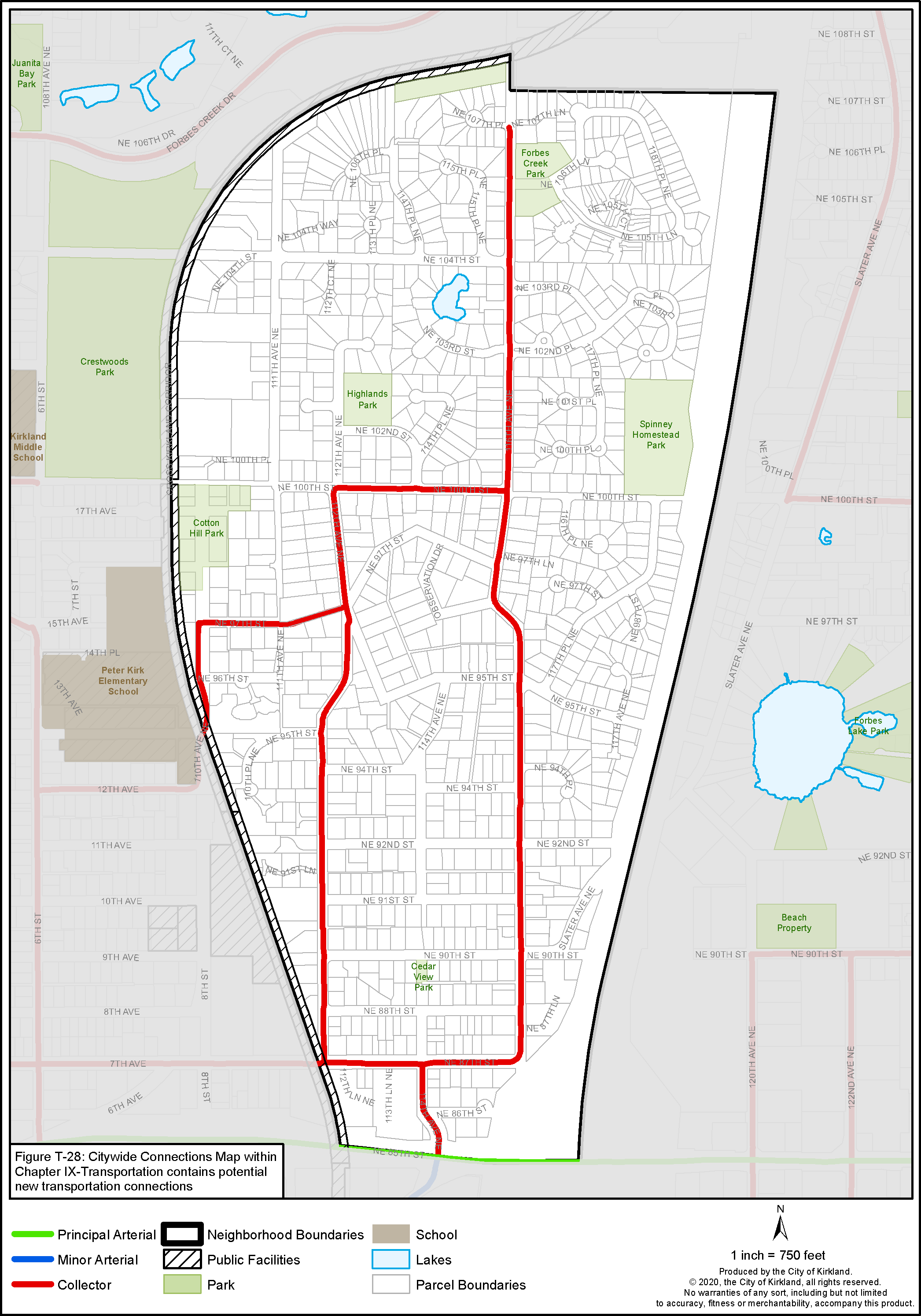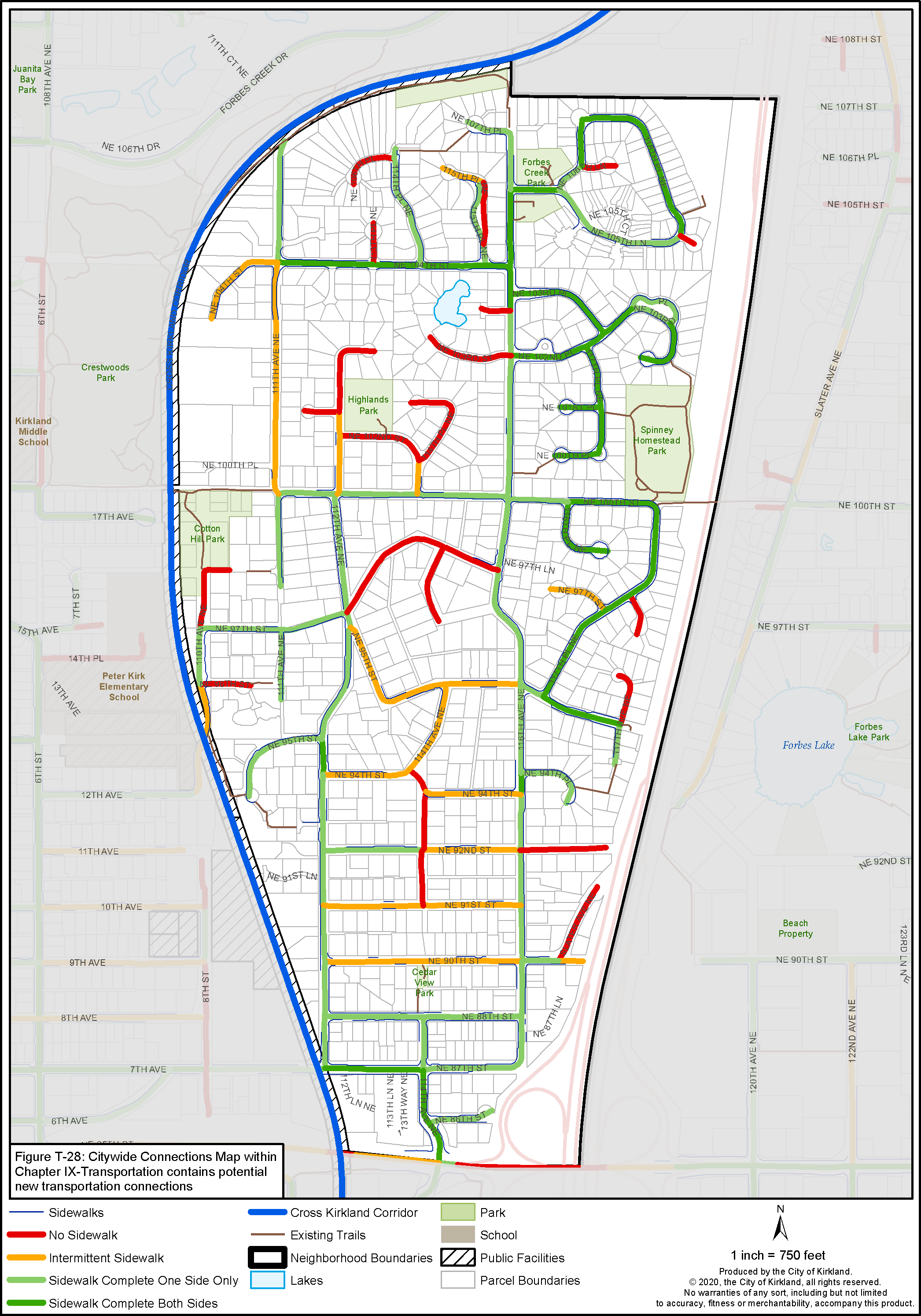7. TRANSPORTATION
TRANSIT
Students living in close proximity to schools are encouraged to walk to schools. Lake Washington School District guidelines are that elementary, middle school and high school students living outside a one-mile radius from each school may receive bus service. King County Metro Transit provides transit service to Kirkland. In coordination with Sound Transit, King County Metro Transit and the Washington State Department of Transportation, the I-405/NE 85th Street Bus Rapid Transit (BRT) Station will provide new opportunities for accessing regional destinations via transit.
The Cross Kirkland Corridor provides a north/south multi-use corridor through Kirkland and to surrounding cities. In the near term it is used as a multi-use pedestrian and bicycle trail and utilities corridor connecting to other neighborhoods and cities. A key tenet of the Cross Kirkland Corridor Master Plan is that the corridor may one day include high capacity transit. Sound Transit has an easement over the CKC to reserve the potential for future transit use. The neighborhood has concerns about transit use on the corridor. Should transit be proposed on the corridor the neighborhood would like to be involved in a public discussion about the function and design of a transit proposal.
STREETS
Within Highlands, the circulation system is in the form of a grid. Maintenance and enhancement of this system will promote neighborhood mobility and will provide for equitable distribution of traffic on neighborhood streets. The streets that compose this grid network consist of collectors and local streets which are shown in Figure H-5. Street classifications are described in the Transportation Element Chapter of the Comprehensive Plan and Kirkland Zoning Code.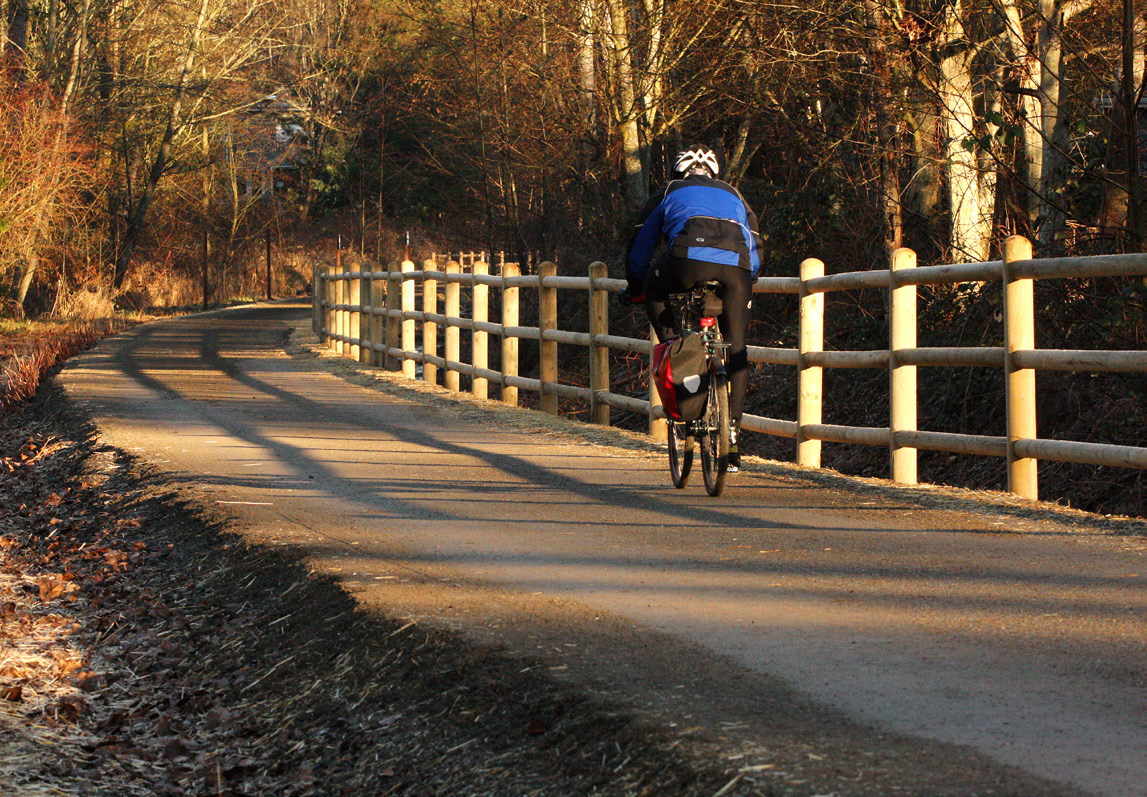
The Cross Kirkland Corridor at 110th Street
Highlands has limited vehicular access. There are three vehicular access points to the neighborhood that are all located within the southern portion of the neighborhood: 114th Avenue NE from NE 85th Street (access from south); NE 87th Street (access from west); and 12th Avenue/110th Avenue NE (access from west). The latter two cross the Cross Kirkland Corridor.
A fourth access point is an overpass bridge over Interstate 405 at NE 100th Street for emergency vehicles, bicycles, and pedestrians. This overpass links the Highlands Neighborhood with the North Rose Hill Neighborhood.
Policy H-18:
Maintain limited vehicular access to and from the neighborhood and provide road improvements as needed.
Policy H-19:
Manage traffic impacts within the neighborhood to enhance neighborhood mobility and provide for more equitable distribution of traffic on neighborhood streets.
The southern region of Highlands receives more traffic volumes due to the southern location of the three neighborhood access points. Traffic calming measures should be developed as needed in cooperation with the Transportation Division and Fire Department to accommodate emergency response needs and times. Pedestrian and bicycle connections to and from the neighborhood should also be promoted to increase mobility.
Policy H-20:
Maintain 110th Avenue NE north of the existing street at NE 98th Street as an unimproved right-of-way.
This unimproved right-of-way is impacted by critical areas and runs through Cotton Hill Park and should remain in its natural condition.
PEDESTRIAN/BICYCLE CIRCULATION
The Active Transportation Plan (ATP) identifies a network of existing bicycle facilities and planned improvements for a 10-year horizon, provides a process and criteria for identifying sidewalk and pedestrian infrastructure, and how those might be prioritized. Those projects mapped in the Highlands Neighborhood Plan not shown in the ATP have been included in the data analysis that the City will be using to prioritize investments to the ATP. Figures H-6 and H-7 show the existing and desired pedestrian infrastructure in the Highlands Neighborhood. Planned bike routes on NE 100th Street, 116th Avenue NE and NE 87th Street will connect with the bike system in adjacent neighborhoods.
City policy requires that all through streets have pedestrian improvements including sidewalks, curbs, street trees, and landscape strips. As new development occurs, pedestrian improvements are usually installed by the developer. In developed areas, the City should identify areas of need and install sidewalks through the capital improvement budget process. Pedestrian and bicycle infrastructure and access are important within this neighborhood, particularly to youth, due to limited transit and school bus routes. The proposed pedestrian improvements (Figure H-6) include those streets identified as school walk routes.
Bicycles are permitted on all City streets.
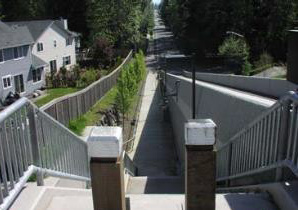
NE 100th Street Emergency/Nonmotorized Overpass
Existing bicycle routes are shown on Figure H-7. Improvements may include a shared roadway, a designated bike lane with a painted line, or a shared use path for bicycle and pedestrian use.
Policy H-21:
Enhance and maintain pedestrian and bicycle infrastructure within the Highlands Neighborhood, especially on routes to schools, activity nodes, adjacent neighborhoods, Cross Kirkland Corridor and Sound Transit Bus Rapid Transit Station at I-405/NE 85th Street.
The following streets have been identified by the neighborhood as priorities for implementation including sidewalks, curbs, gutters, street trees, landscape strips, and bicycle improvements along their entire length:
116th Avenue NE serves as an important north-south spine through the length of the neighborhood with direct access to Forbes Creek Park and access only two blocks off this route to three neighborhood parks: Highlands Park, Spinney Homestead Park, and Cedar View Park. It also connects with two access routes from the west and south into the neighborhood. A sidewalk is completed along most of the east side of the street. An asphalt walkway provides a temporary sidewalk on two southern portions.
NE 100th Street serves as an east/west link between Redmond and the waterfront in Kirkland. At Interstate 405, there is the NE 100th Street overpass, which provides emergency vehicle access and a pedestrian and bicycle route to link the Highlands and North Rose Hill Neighborhoods. It serves as an important connection between the two north-south collectors of 116th Avenue NE and 112th Avenue NE and is used by students as a route to Kirkland Middle School and Peter Kirk Elementary School. A sidewalk is completed on the south side of the street.
NE 95th and NE 97th Streets are designated school walk routes to Peter Kirk Elementary. Sidewalks exist on the north side of NE 95th between 112th Avenue NE and 116th Avenue NE and on the south side of NE 97th Street between 110th Avenue NE and 112th Avenue NE. Sidewalk is needed on NE 97th Street.
NE 87th Street provides access into Highlands at the Cross Kirkland Corridor, and connects with a second neighborhood access point at 114th Avenue NE. It also serves as an important connection between the two north-south collectors of 116th Avenue NE and 112th Avenue NE. As a route with high volume of vehicular traffic, it is important that the intersections, bicycle and pedestrian infrastructure be improved to meet the need for vehicle and nonmotorized access into the neighborhood, and connections to the CKC and BRT Station. Between 112th and 116th Avenue NE sidewalks are located along both sides of NE 87th Street, except a portion east of 114th Avenue NE, where it is only along the north side of the street. The sidewalks on the south side of NE 87th Street east of 114th Avenue NE should be completed to improve pedestrian connection to the BRT Station.
Policy H-22:
Promote greater pedestrian and bicycle connection between the Highlands and North Rose Hill and South Juanita Neighborhoods.
The emergency and nonmotorized overpass at NE 100th Street provides a connection between the Highlands and North Rose Hill Neighborhoods.
Provide a nonmotorized connection across Interstate 405 at NE 90th Street as outlined in the Active Transportation Plan and Citywide Connections Map in the Transportation Element of the Comprehensive Plan. Given the limited access points into Highlands, it is important to increase the neighborhood’s connectivity with adjacent neighborhoods. A second overpass on NE 90th Street across Interstate 405 would help achieve greater pedestrian and bicycle connectivity to the North Rose Hill Neighborhood and the BRT Station at I-405/NE 85th Street interchange.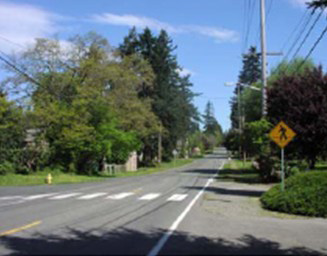
116th Avenue NE
Policy H-23:
Develop off-street trails for recreational use to promote greater connectivity within Highlands and to adjacent neighborhoods and areas.
Expand the existing off-street trail network as opportunities arise with infill development because nonmotorized connections within Highlands and to adjacent areas are important to community members.
Policy H-24:
Support development of the Cross Kirkland Corridor as a pedestrian and bicycle corridor.
The Cross Kirkland Corridor Master Plan and Transportation Element of the Comprehensive Plan describe how the corridor should be developed as a multimodal transportation corridor for pedestrians, bicycles, utilities and potential transit. The corridor is part of a larger regional bicycle and pedestrian trail network to link neighborhoods within Kirkland and to other cities. Because the Cross Kirkland Corridor Master Plan and Transportation Element support future transit along the corridor and Sound Transit has an easement along the Cross Kirkland Corridor, any future plans to develop transit service should be designed in a way that is sensitive to meeting the concerns of the adjacent community.
With development, redevelopment or platting, public pedestrian and bicycle access easements should be provided for properties adjacent to the CKC consistent with the CKC Master Plan and the Parks, Recreation and Open Space (PROS) Plan near the following locations:
• Cotton Hill Park
• End of NE 14th Place
• 110th Place NE
• NE 91st Street
• North of NE 85th Street
Figure H-5: Highlands Street Classifications
Figure H-6: Highlands Street Pedestrian System
Figure H-7: Highlands Bicycle System



